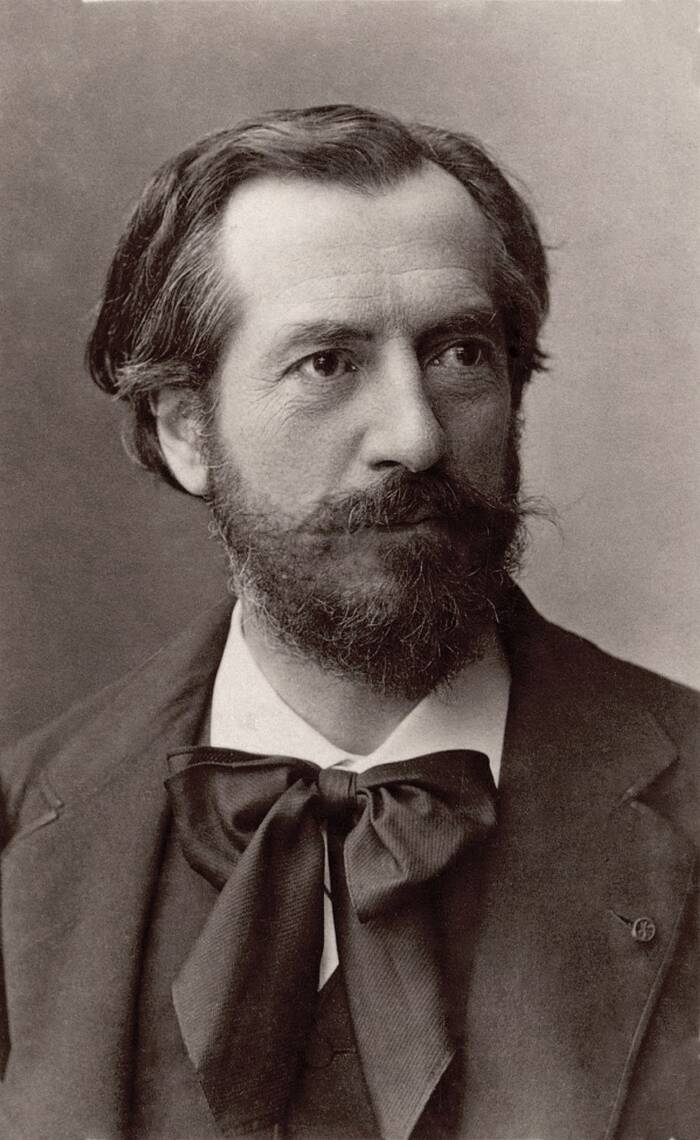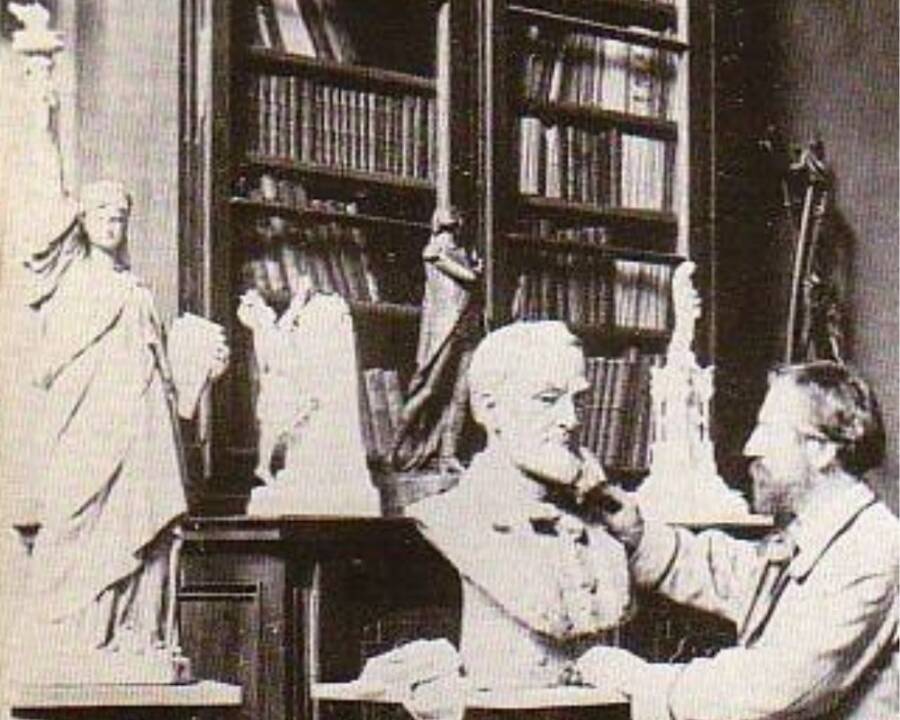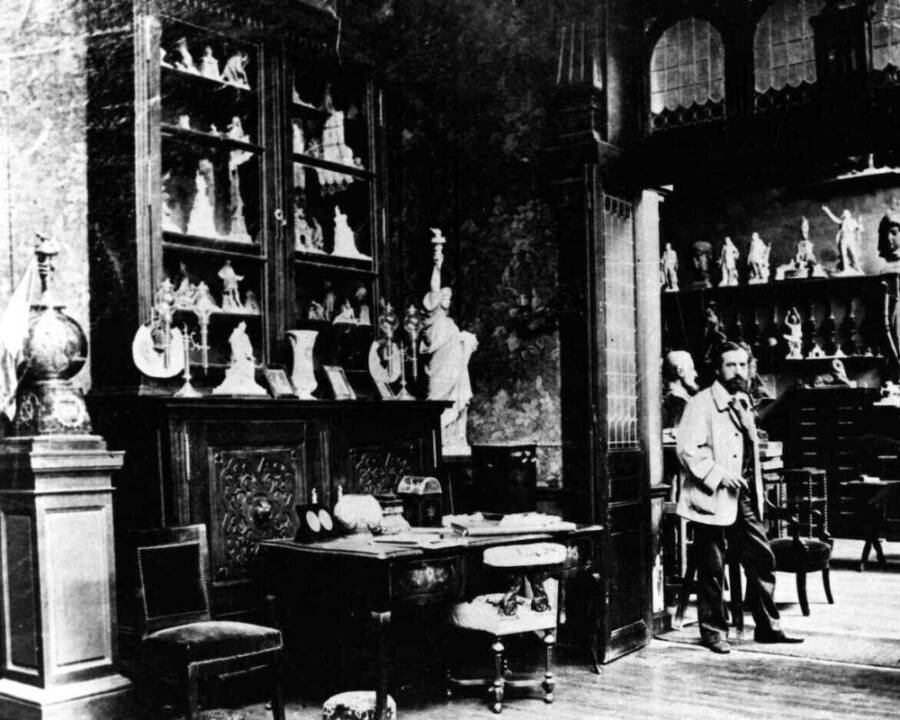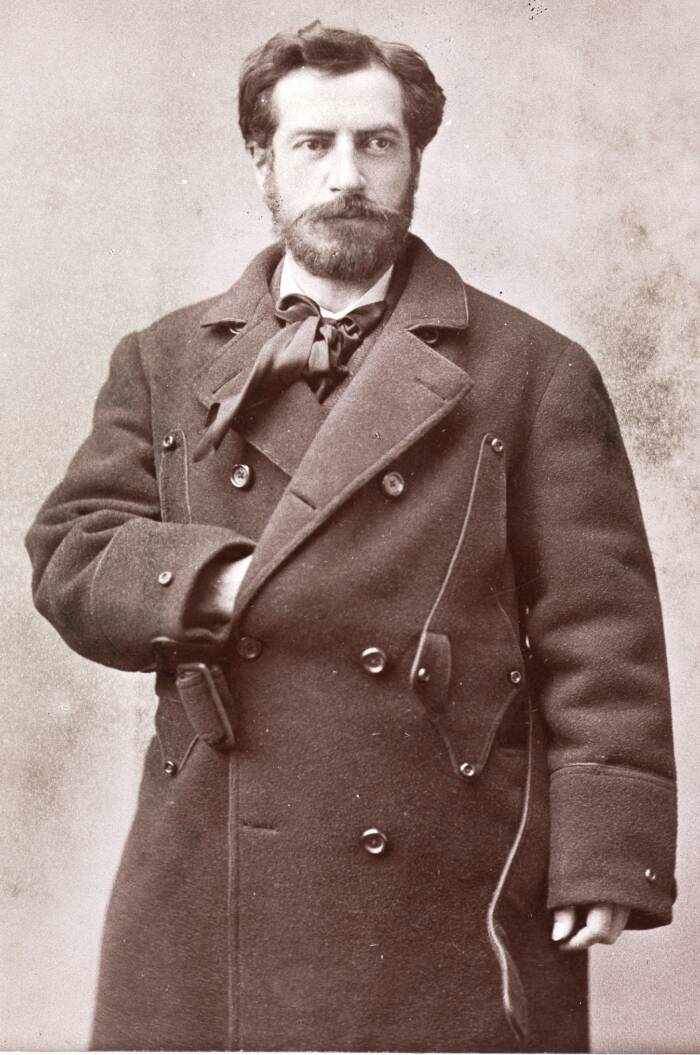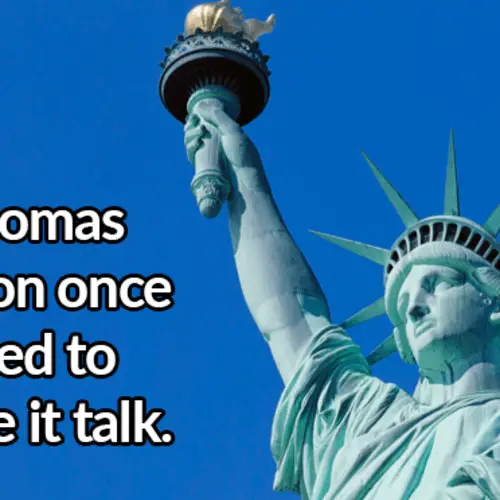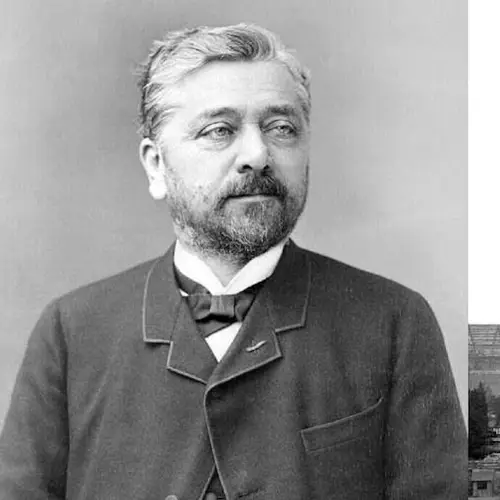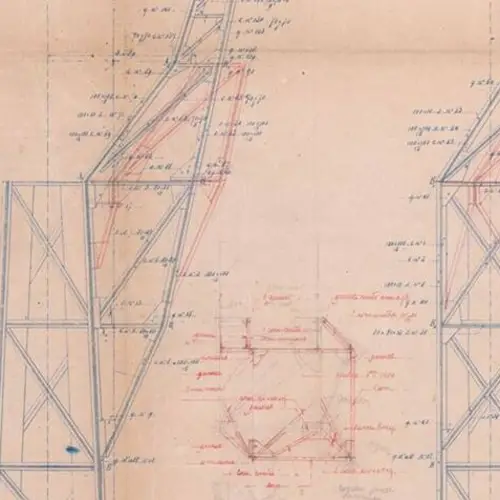Frédéric Auguste Bartholdi began working on the Statue of Liberty in 1870, crafting it from copper sheets that were hammered into shape by hand atop a framework of steel supports made by Gustave Eiffel, the engineer behind the Eiffel Tower.
French artist Frédéric Auguste Bartholdi created dozens of stunning statues and sculptures throughout his 50-year career, but his most famous work isn't located in his home country. Instead, it stands in New York Harbor as one of the most enduring symbols of the United States: the Statue of Liberty.
The idea for the iconic landmark first arose in 1865, when Bartholdi's fellow artist Édouard René de Laboulaye came to him with a plan to gift the American people a statue to commemorate the 100th anniversary of the United States' freedom from Great Britain and France's continuing friendship with America.
The designing of the Statue of Liberty began in earnest in 1870, construction started in 1876, and it was completed in Paris by 1884. The following year, it was shipped to New York, where it was erected upon a pedestal that had been built on an island in New York Harbor. When it was officially unveiled and dedicated on Oct. 28, 1886, Bartholdi stated, "My dream has been realized."
While Frédéric Auguste Bartholdi is remembered today for his depiction of Lady Liberty, his legacy reaches much further. When he died in 1904, his work was on display around the world, from his hometown of Colmar, France, to town squares across the U.S.
Ancient Egypt Inspired Frédéric Auguste Bartholdi's Love For Colossal Sculptures
Frédéric Auguste Bartholdi was born on August 2, 1834, in Colmar, France. His father died when he was two, and his mother moved Frédéric and his older brother, Jean-Charles, to Paris. He was interested in art from a young age, and his family encouraged him to pursue his passion. While still in secondary school, he studied sculpture and architecture with renowned experts in the fields, and he went on to specialize in architecture and painting.
By 1853, however, he'd returned to sculpture. That year, he submitted one of his pieces to the Paris Salon for exhibition. And two years later, at age 20, he was commissioned to create a statue of Napoleonic General Jean Rapp.
It was a trip to Egypt and Yemen in 1855, though, that truly sparked Bartholdi's interest in colossal statues. He was entranced by the towering monuments that still stood throughout the Middle East from ancient times. According to the National Park Service, Bartholdi wrote of this trip, "These granite beings, in their imperturbable majesty, seem to be still listening to the most remote antiquity. Their kindly and impassible glance seems to ignore the present and to be fixed upon an unlimited future."
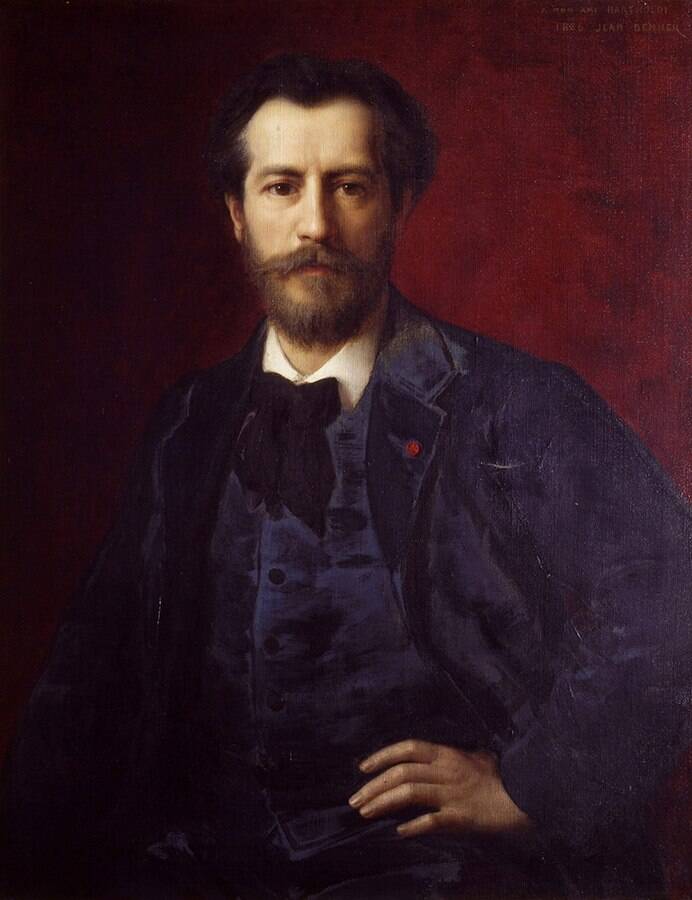
Public DomainAn 1886 portrait of Frédéric Auguste Bartholdi by Jean Benner.
The artist returned to Egypt in 1869 to view the newly completed Suez Canal and propose an idea he had for a sculpture to stand at its entrance. It would be a lighthouse shaped like a draped figure holding a torch and would be called "Egypt Carrying the Light to Asia." While this plan didn't go forward, it influenced Bartholdi's later designs for the Statue of Liberty.
At the time of Bartholdi's second trip to Egypt, Édouard René de Laboulaye had already approached him with his idea to gift a statue to the United States, but the project hadn't yet begun. Then, in 1870, a war broke out that delayed the Statue of Liberty but inspired many more of Bartholdi's works.
How The Franco-Prussian War Influenced Bartholdi's Career
In 1870, Frédéric Auguste Bartholdi set his art aside and joined the National Guard to fight in the Franco-Prussian War. He defended his hometown of Colmar from the Germans, although the region was ultimately defeated and annexed. This loss had a profound impact on Bartholdi and his work after the war.
In the years that followed France's defeat, Bartholdi would create multiple pieces dedicated to French heroism. One of these sculptures, the Lion of Belfort, is often considered his masterpiece. The sculpture symbolizes France's resistance during the Siege of Belfort, when 17,000 French citizens successfully held off 40,000 Prussians for 103 days. He started carving it from sandstone in 1871, but it wasn't completed until 1880.
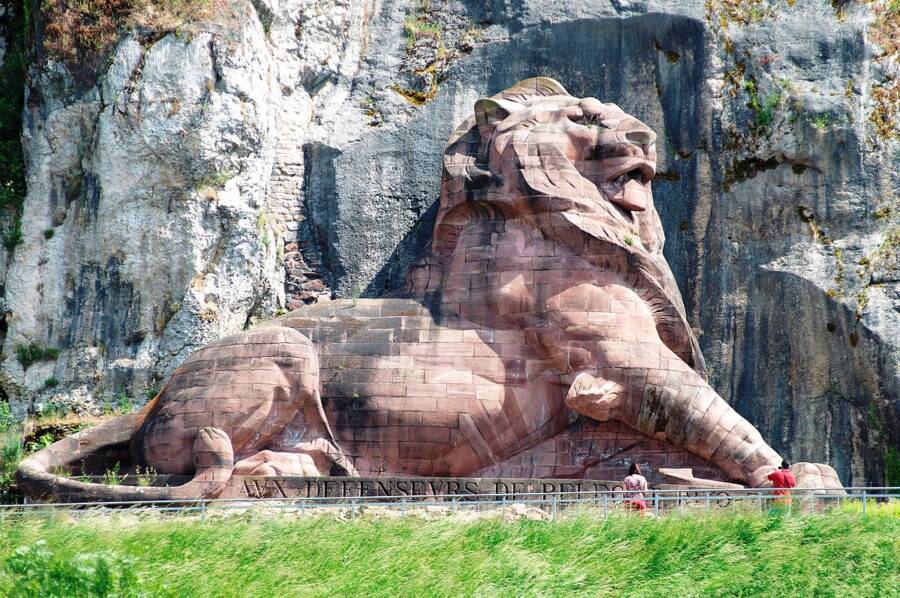
Patmill/Wikimedia CommonsSome consider the red sandstone Lion of Belfort, which was completed in 1880 to celebrate the French resistance against the Prussians during the Siege of Belfort, to be Bartholdi's masterpiece.
He also created a monument commemorating the balloonists who transported mail and residents out of Paris during the Prussian siege that lasted from September 1870 to January 1871. However, this statue no longer stands today: It was melted by the Nazis during World War II.
Even while creating these war sculptures, however, Bartholdi still kept his idea for the Statue of Liberty in the back of his mind. And in 1871, he traveled to the U.S., ready to put his colossal plan into action.
Creating The Statue Of Liberty
The Statue of Liberty, officially called "Liberty Enlightening the World," was meant to honor France's assistance to the United States during the American Revolution and the continuing alliance between the two countries. However, it needed funding if it were to come to fruition.
Bartholdi's trip in 1871 was partly to secure this funding, but as he sailed into New York Harbor, he checked something else off of the project's to-do list: identifying a location for the statue. On June 24, 1871, he wrote a letter to his mother back in France mentioning "the site that I dream of... a little island." At the time, it was called Bedloe's Island, but today it's known as Liberty Island.
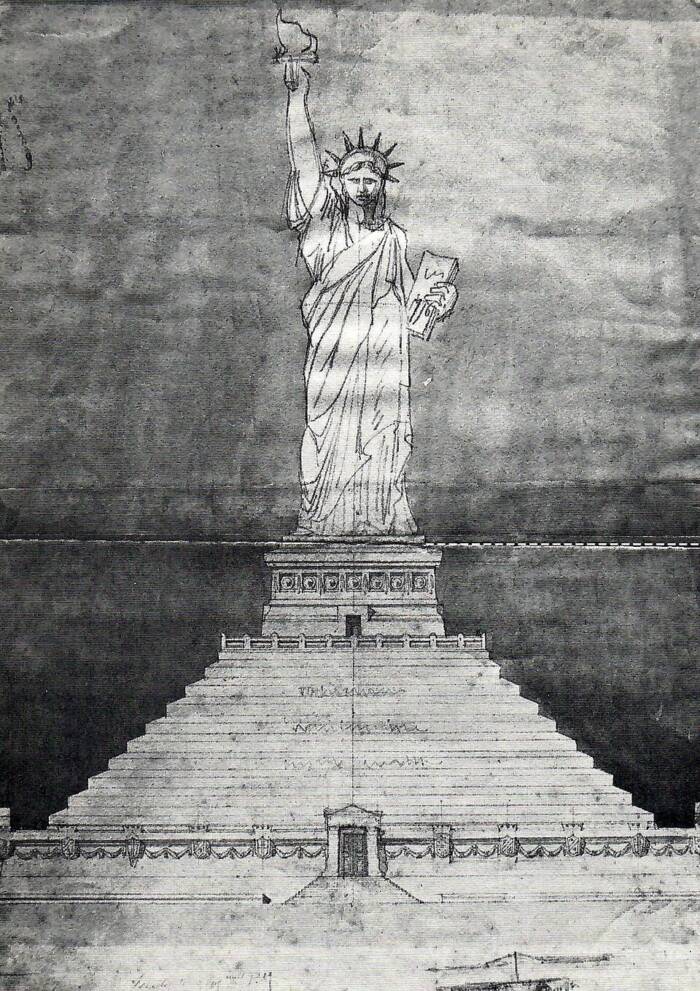
Public DomainA sketch of the Statue of Liberty made by Frédéric Auguste Bartholdi.
The next five years were spent completing designs and raising funds for the project in both France and the United States. Bartholdi set up two committees, one in America and one in France, for this purpose. The French committee was responsible for raising money for the statue, while the American committee funded the pedestal.
Construction of the statue began in earnest in 1876. The architect who was initially building the internal metal framework, Eugène Viollet-le-Duc, died unexpectedly in 1879, and Gustave Eiffel — the man behind the Eiffel Tower — took over.
By 1884, the Statue of Liberty had been completed in France. It was shipped to the U.S., arriving in New York Harbor on June 17, 1885. The pedestal on Liberty Island was completed in April 1886, and the statue was then carefully unpacked and reconstructed atop it.
Frédéric Auguste Bartholdi traveled to New York City for the official inauguration of the statue on Oct. 28, 1886, standing proudly by to witness the culmination of nearly two decades of his work.
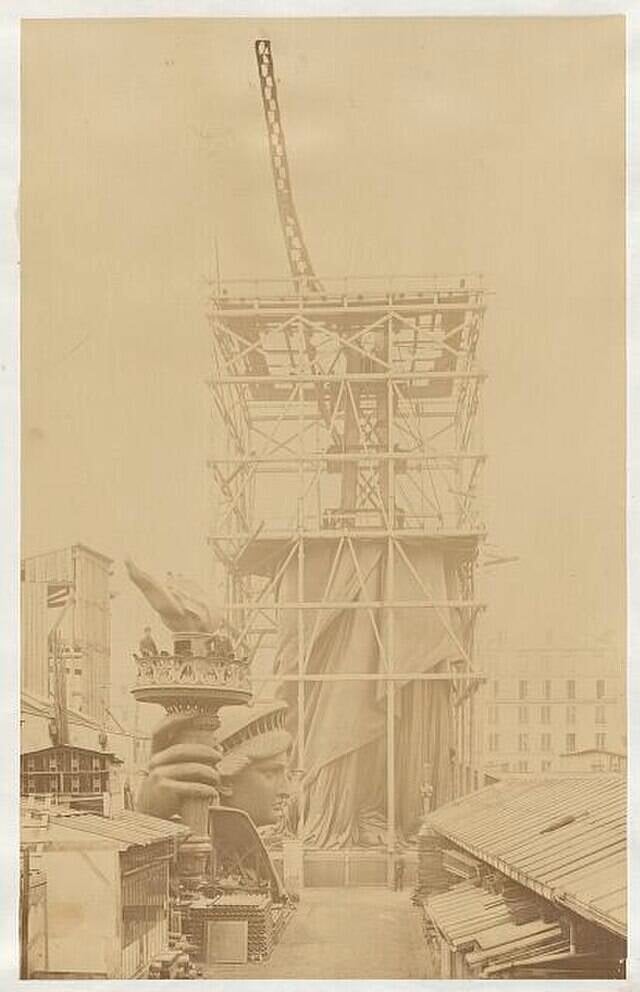
Public DomainThe Statue of Liberty was initially constructed in Paris before it was shipped to the United States.
"My dream has been realized," Bartholdi told a reporter at the time. "I can only say that I am enchanted. This thing will live to eternity, when we shall have passed away, and everything living with us has moldered away."
The Later Career Of The Renowned French Sculptor
In addition to the Statue of Liberty and the sculptures he made following the Franco-Prussian War, Bartholdi also created dozens of other works that were exhibited at salons in Paris, town squares in the U.S., and even the Philadelphia Centennial Exposition in 1876 and the World's Columbian Exposition in 1893.
He didn't stick solely to sculptures, though. Bartholdi also dabbled in photography, sketched, and painted, including several paintings of early settlers living in California.
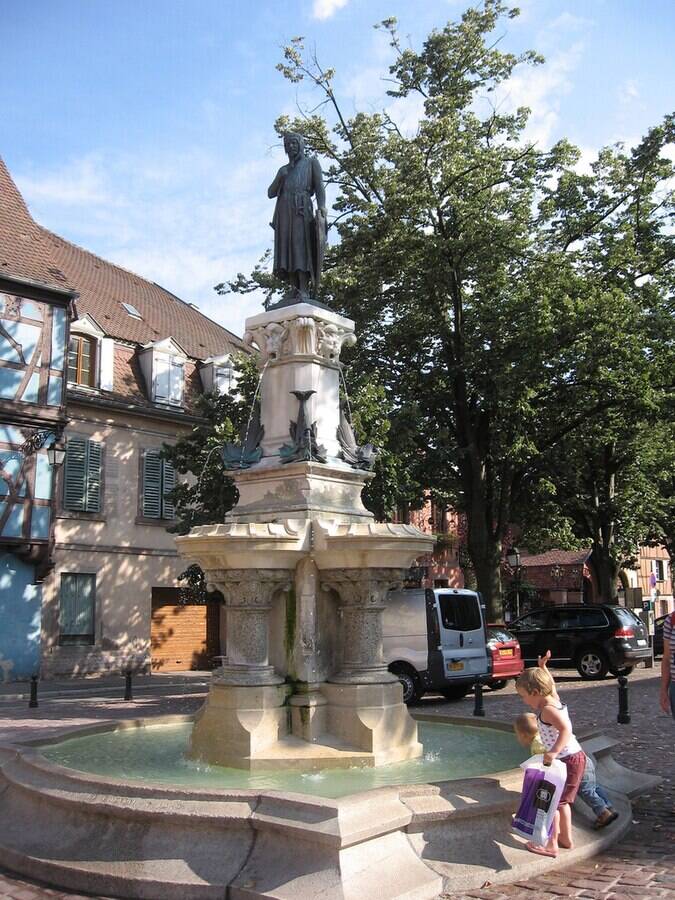
Reinout van Rees/Wikimedia CommonsMany of Bartholdi's sculptures are still on display in Colmar, such as the Roesselmann Fountain, pictured here.
In 1886, he was awarded the French Legion of Honor, the country's most prestigious order of merit. He died from tuberculosis on Oct. 4, 1904, at age 70. After his death, his childhood home in Colmar was transformed into the Musée Bartholdi.
Today, Bartholdi's legacy lives on in New York Harbor, raising the torch of progress, holding the tablets of law, and stepping forward out of her chains of tyranny.
After reading about the life of Frédéric Auguste Bartholdi, the man behind the Statue of Liberty, look through these colorized photos of France's "Belle Époque." Then, learn about Emma Lazarus, the poet behind the Statue of Liberty's famous inscription.
